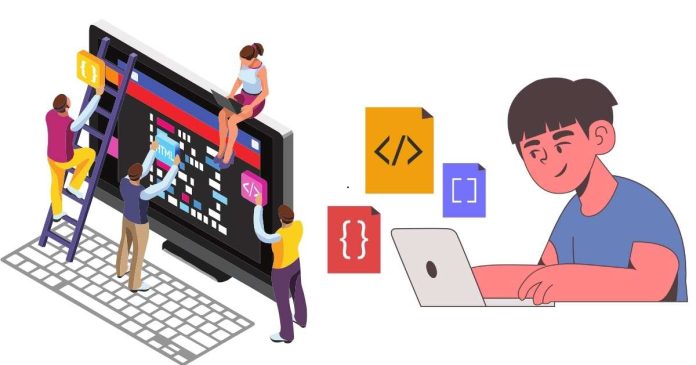CSS Float is a property that allows elements to be positioned to the left or right of their container, allowing content to flow around them. It’s a crucial technique for creating layouts, especially in the earlier days of web design. Though newer techniques like Flexbox and Grid have become more popular, the float property still has its uses in specific scenarios.
In this blog post, we’ll cover the basics of CSS Float, how it works, and how you can use it effectively in modern web design.
What is CSS Float?
The float property in CSS was originally designed for wrapping text around images, but it’s evolved to be a tool for more complex layouts. When you apply the float property to an element, it is taken out of the normal document flow and placed to the left or right of its containing block. Other elements (such as text or images) will flow around the floated element.
The syntax for using float looks like this:
.element {
float: left; /* or right */
}
The key values for the float property are:
left: Floats the element to the left of its container.right: Floats the element to the right of its container.none(default): The element will not float and will stay in the normal document flow.inherit: The element will inherit the float property from its parent.
How Float Works
To better understand how float works, consider this simple example:
<div class="container">
<img src="image.jpg" class="float-left" alt="An image">
<p>This is a paragraph of text that will wrap around the floated image. The text will continue on the right side of the image, making the layout look nice and aligned.</p>
</div>
.float-left {
float: left;
margin-right: 15px; /* Adds spacing between the image and the text */
}
In the example above, the image is floated to the left, and the text will wrap around it. The float: left; makes the image float to the left, and the text continues to the right of it.
Common Use Cases for CSS Float
- Text Wrapping Around Images
The most common use offloatis to make text wrap around images. By floating the image to the left or right, the text will naturally flow around it, creating a visually appealing layout. - Multi-Column Layouts
Before Flexbox and CSS Grid became widely supported, developers often usedfloatto create multi-column layouts. By floating different elements, such as divs, side-by-side, developers could simulate a grid-like layout. - Inline Blocks
Floats can be used to create a series of inline blocks. For example, floating multiple elements to the left or right can help in creating horizontal navigation menus or card-based layouts.
Clearing Floats
One of the challenges with using float is dealing with the issue of “clearing.” When you float an element, it is taken out of the document flow, which can cause container elements to collapse in height. To prevent this, you need to “clear” the floated elements.
To clear floats, you can use the clear property on an element. For example:
.clearfix::after {
content: "";
display: table;
clear: both;
}
This is a popular technique known as the clearfix hack. The ::after pseudo-element is used to create a block-level container that clears both left and right floats, preventing the container from collapsing.
The Downsides of CSS Float
While the float property is powerful, it can be tricky to use for more complex layouts, and there are some notable downsides:
- Layout Complexity
Floats can lead to complex and unpredictable layouts, especially if you need to manage multiple elements that float around each other. - Requires Clearing
As discussed, clearing floats is necessary to prevent layout issues, which adds extra CSS code and complexity. - Limited Flexibility
Floats don’t provide the same flexibility as newer layout systems like Flexbox and Grid. These newer systems offer better ways to build responsive and complex layouts.
Alternatives to CSS Float
While float has its place, many modern web layouts now use Flexbox or Grid systems, which provide greater control and flexibility. Here’s a brief overview of these alternatives:
- Flexbox
Flexbox is a one-dimensional layout system that makes it easy to create responsive layouts. It can handle both row and column arrangements and comes with powerful alignment and distribution features. It’s an ideal choice for aligning items and creating flexible layouts. - CSS Grid
CSS Grid offers a two-dimensional layout system, giving developers more control over both rows and columns. It’s highly versatile and is particularly useful for complex grid-based layouts. Unlike floats, Grid doesn’t require clearing, and it provides greater control over element placement.
Conclusion
CSS Float is a powerful tool for creating certain types of layouts, particularly when wrapping text around images or making simple multi-column designs. However, due to its limitations and potential for layout issues, it’s often best to use modern alternatives like Flexbox or CSS Grid for more complex or responsive layouts.
By understanding how float works and knowing when and how to clear it, you can effectively use this technique in your web design projects. However, remember that it’s often just one tool in your CSS toolbox, and you have plenty of other options for creating flexible, responsive designs.


